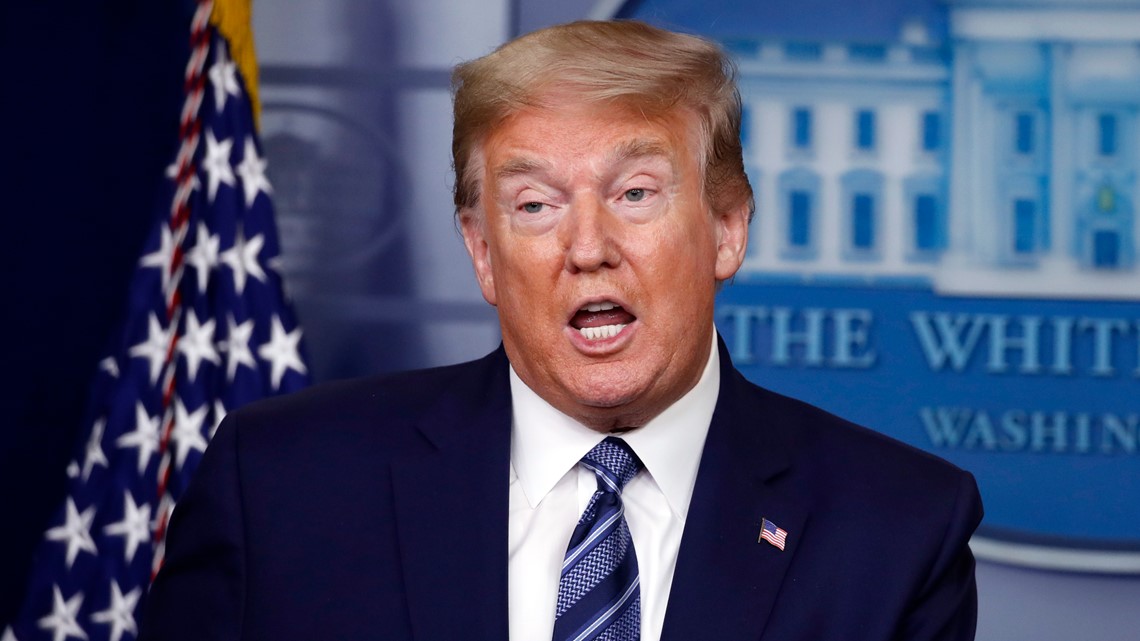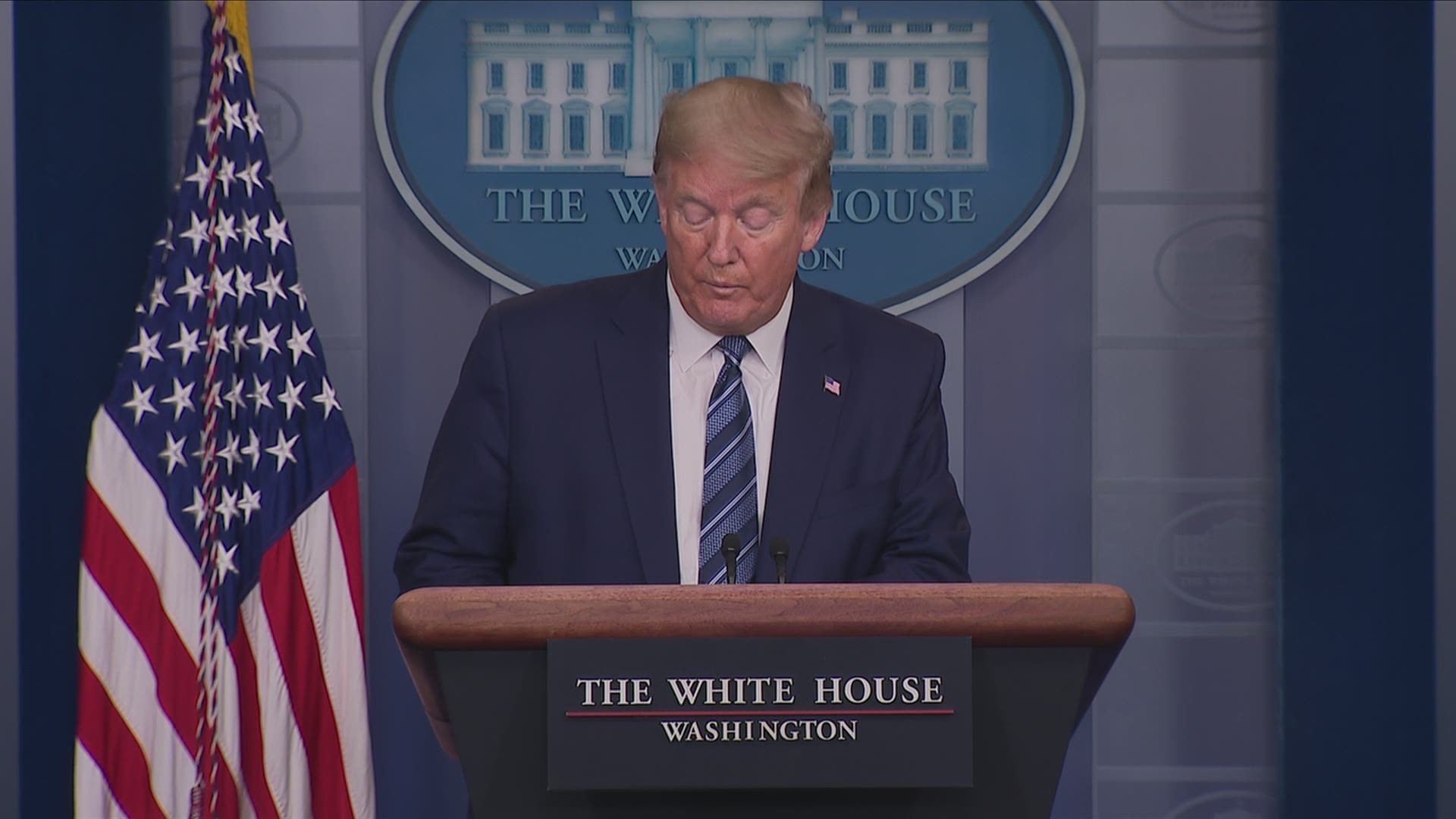WASHINGTON — President Donald Trump announced what he described as a “temporary suspension of immigration into the United States” on Tuesday, an executive order barring those seeking permanent residency green cards but not temporary workers.
Trump said he would be placing a 60-day pause on the issuance of green cards in an effort to limit competition for jobs in a U.S. economy wrecked by the coronavirus. But he said there would be “certain exemptions” included in the order, which staff were still crafting Tuesday.
An administration official familiar with the plans said the order would apply to foreigners seeking employment-based green cards and relatives of green card holders who are not citizens. But Americans who wish to bring immediate family to the country would still be able to do so, according to the official, who spoke on condition of anonymity before the plan was announced. About one million green cards were granted in the 2019 fiscal year, about half to spouses, children and parents of U.S. citizens.
By limiting his immigration measure to green cards, Trump was leaving untouched hundreds of thousands of foreign workers granted non-immigrant visas each year, including farm workers, health care workers and software programmers.
Trump has long advocated restrictions on both legal and illegal immigration and has raised concerns for years about foreigners competing with American citizens for jobs.
But he denied he was using the virus to make good on a long-standing campaign promise during an election year. “No,I'm not doing that all," he said.


Trump has often pivoted to his signature issue of immigration when he’s under criticism. It’s one he believes helped him win the 2016 election and one that continues to animate his loyal base of supporters heading into what is expected to be a brutal reelection fight. It has also served as a useful tool for distracting from news he’d prefer removed from the headlines.
At the White House, he said, “By pausing immigration we’ll help put unemployed Americans first in line for jobs as America reopens, so important. It would be wrong and unjust for Americans laid off by the virus to be replaced with new immigrant labor flown in from abroad."
He said economic conditions would determine whether the pause would be extended.
While major new limits on immigration would normally affect millions of people, much of the immigration system has already ground to a halt because of the pandemic. Almost all visa processing by the State Department has been suspended for weeks. Travel to the U.S. has been restricted from much of the globe. And Trump has used the virus to effectively end asylum at U.S. borders, including turning away children who arrive by themselves and putting a hold on refugee resettlement — something Congress, the courts and international law hadn't previously allowed.
Criticism of Trump's announcement was swift, especially his timing during the pandemic. Ali Noorani, president of the National Immigration Forum, noted that thousands of foreign-born health care workers are currently treating people with COVID-19 and working in critical sectors of the economy.
Andrea Flores of the American Civil Liberties Union said Trump seemed "more interested in fanning anti-immigrant flames than in saving lives.”
But Jessica Vaughn, director of policy studies at the Center for Immigration Studies, which favors lower rates of immigration, said that eliminating millions of work permits and visas would “instantaneously create” new jobs for Americans and other legal workers — even though most businesses are shuttered because of social distancing dictates and stay-at-home orders.
As is often the case, Trump's late-night tweet caught many across the administration off-guard. Though ideas had been discussed at the State and Homeland Security departments, officials said they had received no heads-up that action was coming.
In a statement, White House press secretary Kayleigh McEnany described the order as aimed at protecting both the “health and economic well-being of American citizens as we face unprecedented times." She said, “At a time when Americans are looking to get back to work, action is necessary."
Trump first announced his intentions in a vague tweet Monday night. Across the country, those who could be impacted waited in suspense through the day. Chicago immigration attorney Fiona McEntee said she had been inundated with calls, emails and social media messages, including from company executives hoping to expand their business in the U.S., a person applying for a fiance visa and wondering about their wedding plans, artists seeking “extraordinary ability” visas and foreign students.
“It has created absolute panic,” said McEntee. “These are people’s lives. ... It is irresponsible and cruel to put out something like that without any consideration.”
The U.S. is now reporting more COVID-19 cases than any other country in the world, with almost 800,000 Americans infected, according to figures compiled by Johns Hopkins University. More than 42,000 have died.
Trump has already used the crisis to take dramatic steps to limit immigration. Last month, the administration effectively ended asylum, relying on a rarely used 1944 law aimed at preventing the spread of communicable disease. U.S. borders with Mexico and Canada have also been closed to tourism and recreational travel. Commercial traffic and a wide range of “essential” workers are still allowed to travel freely.
Trump could have used his authority to slash the number of foreign workers allowed to take seasonal jobs in the U.S. Before the outbreak, the administration had planned to increase the number of H-2B visas, angering people who favor more restrictive immigration policies, including some supporters of the president who view foreign workers willing to accept lower wages as unfair competition to American labor. The Department of Homeland Security later put that plan on hold.
___
Spagat reported from San Diego. Associated Press writers Colleen Long, Zeke Miller and Darlene Superville in Washington, Carlos Rodriguez in Mexico City and Sophia Tareen in Chicago contributed to this report.

